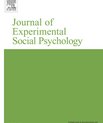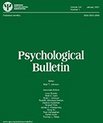The emergence of systematicity: How environmental and communicative factors shape a novel communication system
IMC researchers published new article in the journal Cognition
Abstract
Where does linguistic structure come from? We suggest that systematicity in language evolves adaptively in response to environmental and contextual affordances associated with the practice of communication itself. In two experiments, we used a silent gesture referential game paradigm to investigate environmental and social factors promoting the propagation of systematicity in a novel communication system. We found that structure in the emerging communication systems evolve contingent on structural properties of the environment. More specifically, interlocutors spontaneously relied on structural features of the referent stimuli they communicated about to motivate systematic aspects of the evolving communication system even when idiosyncratic iconic strategies were equally afforded. Furthermore, we found systematicity to be promoted by the nature of the referent environment. When the referent environment was open and unstable, analytic systematic strategies were more likely to emerge compared to stimulus environments with a closed set of referents. Lastly, we found that displacement of communication promoted systematicity. That is, when interlocutors had to communicate about items not immediately present in the moment of communication, they were more likely to evolve systematic solutions, supposedly due to working memory advantages. Together, our findings provide experimental evidence for the idea that linguistic structure evolves adaptively from contextually situated language use.
Article
Nölle, J., Staib, M., Fusaroli, R., & Tylén, K. (2018). The emergence of systematicity: how environmental and communicative factors shape a novel communication system. Cognition, 181, 93-104.
Contact
Riccardo Fusaroli, Associate Professor, IMC and School of Communication and Culture



